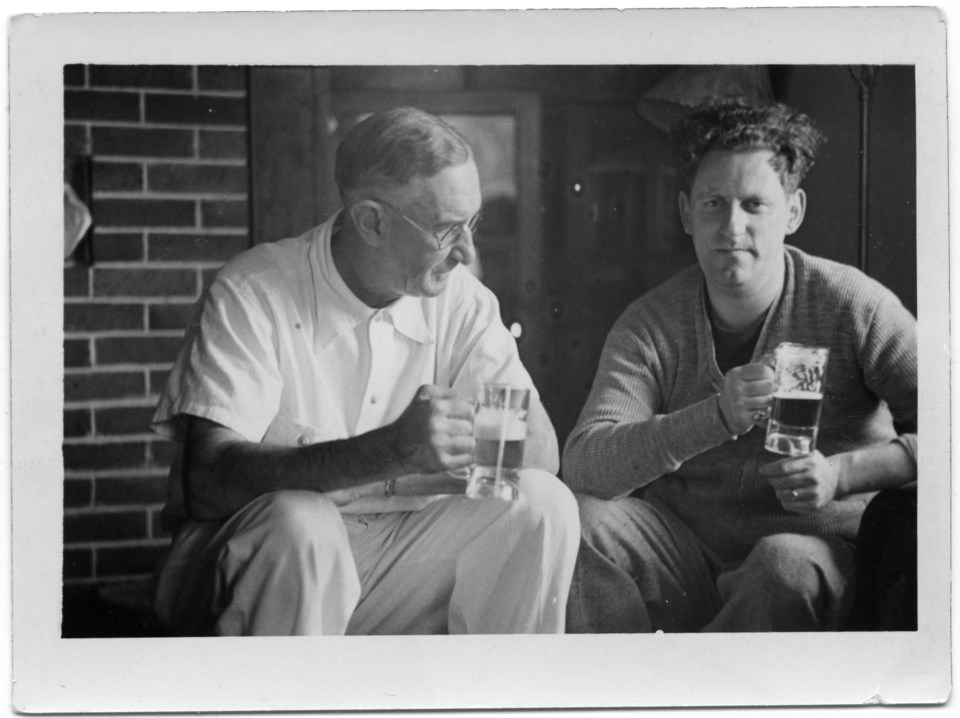Whistler has long had a connection to the film industry in Canada, from the long-running Whistler Film Festival to film productions like the campy Ski School comedy films of the 1990s and countless Hallmark Christmas movies to the world-renowned action sports films by Anthill Films and Sherpas Cinema.
Whistler is also a part of our nation’s earlier film history in that Canada’s first talking picture, or “talkie”—a film produced with synchronized sound, as opposed to the silent films that were prevalent prior to the 1930s—was based off a novel written by Alta Lake resident Alex Philip.
Alex Philip was one of Whistler’s most well known residents during the first part of the 20th century. In 1915, he and his wife Myrtle opened Rainbow Lodge, Alta Lake’s first summer getaway, and were quintessential in bringing tourism to the valley.
Alex was also an author and went on to pen three novels while operating Rainbow Lodge. The first of his three novels, The Crimson West, was published in 1925. This novel would be adapted into a film called The Crimson Paradise (or Fighting Playboy in the U.S.) in 1933. Shot in Victoria and the surrounding area of Oak Bay and Cowichan Valley, this was Canada’s first talkie.
The screenplay for The Crimson Paradise was written by Arthur Hoerl, who later wrote the screenplay for Reefer Madness (1936), the now-infamous American propaganda film about the dangers of the consumption of marijuana.
The director of The Crimson Paradise, Robert F. Hill, was one of the directors of Flash Gordon’s Trip to Mars, a 15-episode serial film released in 1938. Lucile Browne, who had a leading role in the Crimson Paradise, went on to star opposite John Wayne in two films in 1935: Texas Terror and Rainbow Valley.
The filmmakers hoped that The Crimson Paradise would help to position Victoria as “Hollywood North,” and also hoped to take advantage of new rules on limiting importation of foreign and Hollywood films into the U.K. The producers incorrectly believed that Canada, as part of the British Commonwealth, would not be subjected to the importation rule and could take advantage of a guaranteed audience by being labelled British instead of “foreign.” This turned out to be incorrect, much to the chagrin of the producers.
The Crimson Paradise premiered at the Capitol Theatre in Victoria on Thursday, Dec. 14, 1933. Ivan Ackery, manager of the Capitol Theater and good friend of Alex Philip, stated, “We only played The Crimson Paradise a week, as I recall, but we did sensational business … It was a real turkey. So lousy it was good. Everyone wanted to see the local people and local scenes.”
The premiere was a major event in Victoria, attracting a few Hollywood stars along with the Premier and Lieutenant Governor of B.C. The film played in Victoria for a week before moving to Vancouver for another weeklong engagement. Despite its successful premiere, the film ended up being a major financial disaster and bankrupted one of the financial backers, Kathleen Dunsmuir. The film was estimated to cost between $50,000 and $60,000.
Alex Philip and Capital Theatre operator Ivan Ackery remained good friends and would look back fondly on their mutual brush with the film industry. The Whistler Museum collection contains copies of all of Alex’s novels, which we hope to have digitized and available for public viewing in the near future. Sadly, The Crimson Paradise is considered a lost film, meaning that no known copies exist.





